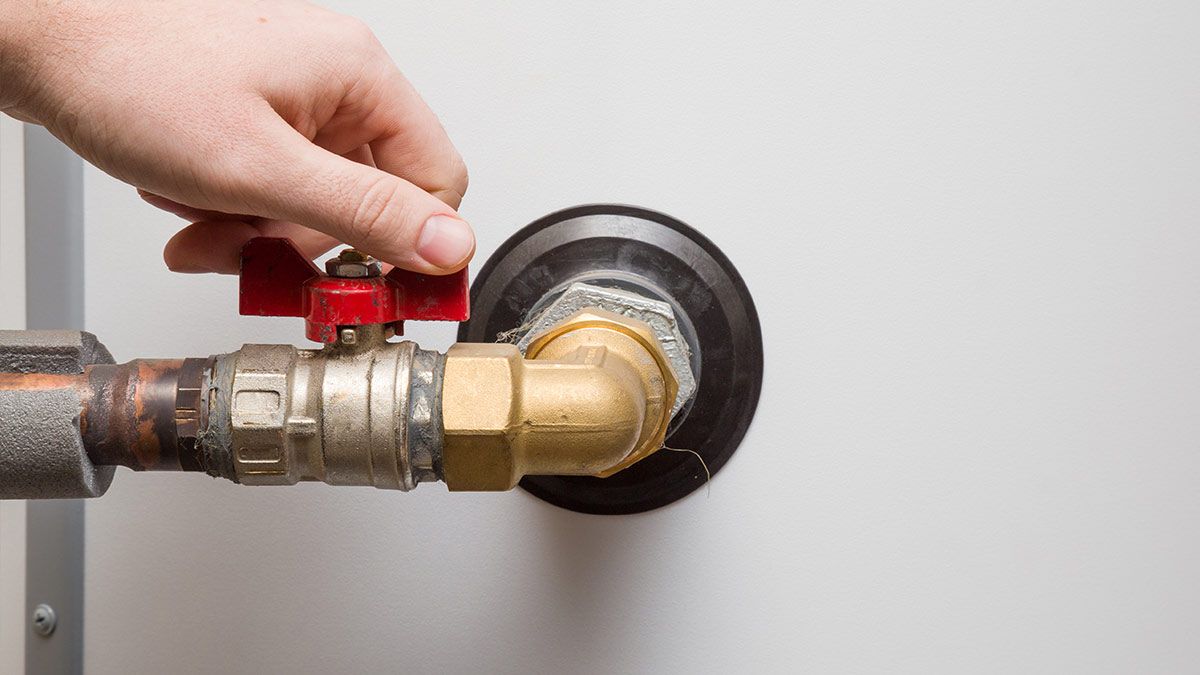Key Takeaways
It's generally best to skip turning off the water heater and use the vacation mode or lowest setting to avoid problems.
If you're headed out of town for a while, you might be curious if you can turn off your water heater to save a little money. Here's what to consider before you do.
Skip a Total Shutdown, Use Vacation Mode
If you have a newer tankless water heater, good news. There is little you have to do if you'll be out of town. Tankless water heaters are largely hands-off. At most, you might consider turning off any features you've enabled, such as a high-recirculation frequency that keeps the water preheated, which won't do any good (and will waste energy) if you're out of town.
If you have a traditional water heater, however, It might be tempting to completely shut your water heater down if you are out of town for weeks or even months, but we'd recommend avoiding that unless you're closing down a vacation home for the season and fully winterizing the plumbing.
Instead, it's much wiser to use "vacation" mode if your water heater has it or to turn it to the lowest possible setting if it doesn't have a vacation mode. Doing so lowers the temperature of the tank well below the regular operating temperature but still keeps the water heater on.
While turning the water heater completely off, naturally, will save the most amount of energy, there are a variety of potential downsides to doing so. First, keeping the water heater tank warm removes any risk of freeze damage if you live in a climate with freezing weather.
Second, water heaters---especially as they age---can be finicky. If you have a really old water heater, you might come home from vacation to find that it doesn't fire up again, and you're stuck with no hot water and a costly repair.
Leaving your water heater in the equivalent of you're computer's standby mode will save you money while still keeping your water heater cycling and ready to roar back to action when you're home from vacation. Because we don't know about you, but the last thing we want to deal with after a trip is a busted water heater and no hot showers, especially if we just got back from a winter holiday.
What to Do When You Get Back from Vacation
When you get back from your trip, whether you turned the water heater off completely, switched it to vacation mode, or dialed the temperature back, you do need to take one small precaution before using the hot water---especially to take a hot shower.
Under normal operating conditions, when set to the correct temperature (at or above 120°F), harmful bacteria like those in the Legionella family can't grow. Bacteria can flourish when the water in your water heater is warm but not hot (in the 77°F-113°F range).
So when you return home from vacation and fire up your water heater, you need to allow a suitable amount of time to pass to kill off any bacterial colonies that have built up in the tank while you were away.
At 120°F, Legionella bacteria doesn't die it simply doesn't grow further. Even if you normally keep your water heater set to 120°F, when you return from vacation, and the tank has been at a lower temperature, you should temporarily increase it. At 130°F, it takes about six hours for the bacteria to die. At 140°F, it takes about a half hour.
So it's wise to turn your water heater up to at least 140°F and wait about two hours before taking a shower. It takes around 30-45 minutes for a gas water heater to reach operating temperature from a cold start and around 60-90 minutes for an electric water heater.
By waiting two hours, you're giving the tank enough time to get up to operating temperature and for the water to be at operating temperature long enough to kill off any bacteria.
It's also not a bad idea to run all the taps in your home to flush out the water that has sat stagnant while you were away. Running both the hot and cold water through the system is a great way to wash away any bacterial buildup and avoid illness.

